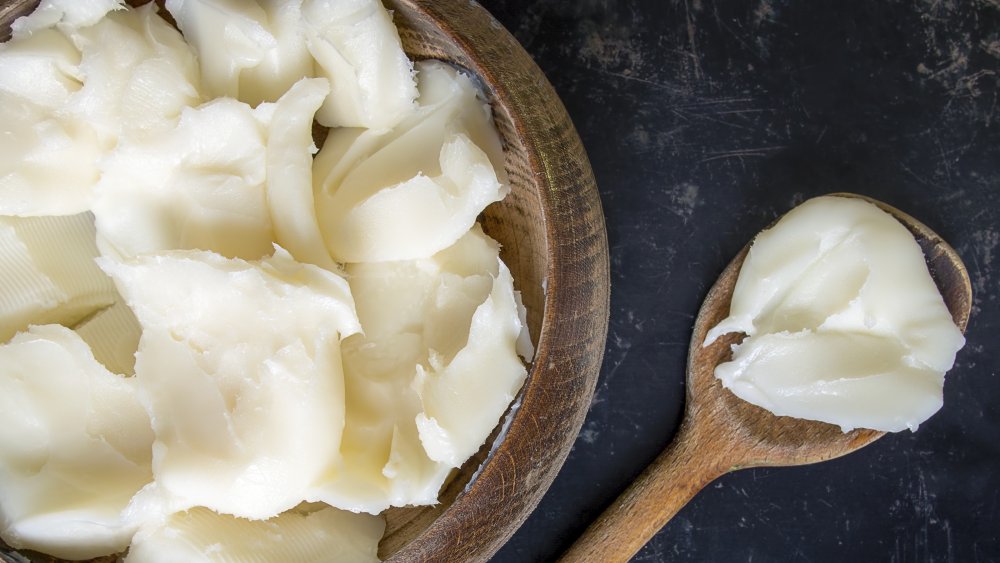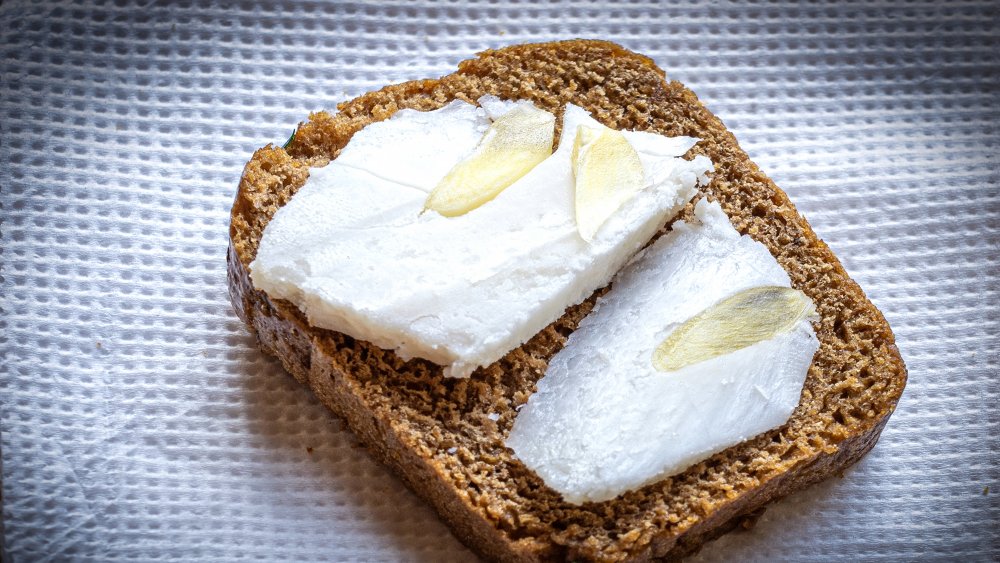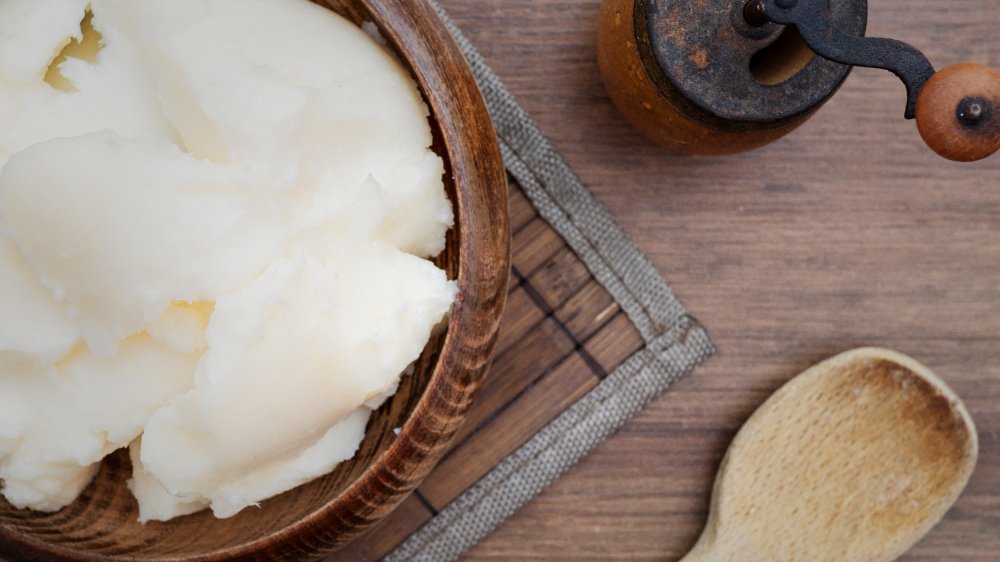The Reason You Should Start Using Lard When Baking
When it comes to baking, everyone has their choice of "fat" or oil that they prefer to use. For some, it's butter; for others, it's a vegetable shortening like Crisco. If you're Italian you might like to use olive oil. Depending on what you are baking (and how you are baking it), sometimes none of the above will be the best. Enter: lard.
Yes, lard. Lard is rendered pig fat and used to be one of the most important ingredients in the 19th and 20th century. It was used much the way butter is used today, according to Pork Business. But as time progressed, lard got a bad rap and was seen as unhealthy, so many cooks began to steer clear of it and use other sources of fat for baking and cooking. Despite the negative press it has gotten in the last few years, lard has been on an upward trend, now seen as a more sustainable option (via Huffpost).
Lard is actually pretty healthy
One cup of lard possesses more unsaturated fat and lower levels of cholesterol than the same amount of butter (via Pork Business). According to the Huffpost, lard carries 20 percent fewer levels of saturated fat than butter, higher levels of monounsaturated fats that can help lower bad cholesterol, and none of the trans fat that shortening carries (assuming you don't buy commercially produced lard). Not only that, but lard is reportedly a large carrier of Vitamin D, a nutrient Americans don't get enough of (via Answers Video and Pork Business).
An estimated single tablespoon of lard carries around 1,000 IUs (international units) of Vitamin D, while the same amount of butter carries 9 IUs. Olive oil? None, according to Pork Business. Lard is also great for high heat cooking, as it maintains its chemical structure better than other fats and oils, avoiding oxidation. Why is this a good thing for you? Oxidation of fat or oils can create harmful free radicals, which are reportedly linked to inflammation (via Supermarket Guru and Pork Business).
One-size lard does not fit all
Like most animals, pigs have lots of places where they can accumulate fat, but that doesn't mean that you shouldn't be careful about the kind of lard that you use when you are getting ready to bake up a storm. Supermarket Guru recommends that when choosing lard to bake and cook, you look for lard that comes from pasture-raised pigs and render it at home (which, according to Wise Geek, isn't too difficult of a process, if you're up for it), as it is your safest bet for pure, fresh lard. They state that not only is it better than commercial lard that comes from pigs that are confined, but that it's neither bleached, deodorized, nor hydrogenated (which sees the addition of trans fat).
The Guardian also suggests that you look for leaf lard. Why leaf lard? It is seen as one of the highest grades of lard and is found in the kidneys and the loin of the pig. Next in value is "fatback," which comes from — you guessed it — the pig's back. But, like most foods and cologne, it's always good to err on the side of cautious moderation when cooking with lard.


